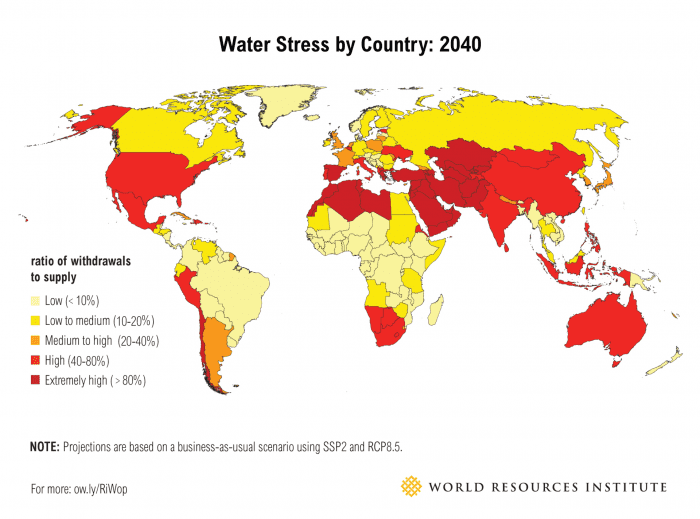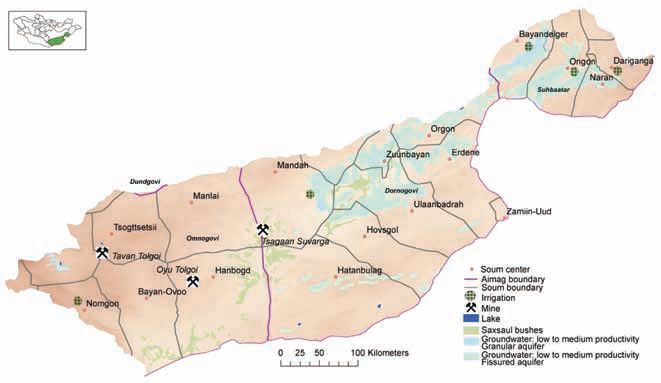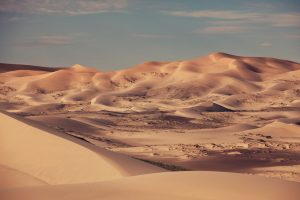Given that Mongolia has been ranked as one of 36 high-water-risk countries in the world, the recently concluded U.N. Water Conference touched on issues of immense importance to the country.
The U.N. Water Conference ended on March 24 in New York and emphasized that more robust actions are needed to manage, protect, and preserve water sources and improve lives. The conference generated more than 700 commitments by member states, multilateral banks, the private sector, and NGOs. It brought together many stakeholders, including heads of state, world business leaders, civil society, young people, scientists, academics, indigenous people, U.N. agencies, and others to urge the world to accelerate Sustainable Development Goal 6 (water and sanitation for all by 2030) and to make significant progress across all SDGs.
During the conference, U.N. Secretary General António Guterres highlighted that progress on water-related goals remains significantly low, thus undermining the entire sustainable development agenda. Moreover, he urged countries and businesses to work together to tackle issues of water overconsumption and the impacts of climate change to prevent further conflicts and forced migration due to increasing water scarcity worldwide. Guterres said, “We are draining humanity’s lifeblood through vampiric overconsumption and unsustainable use and evaporating it through global heating. Governments must develop and implement plans that ensure equitable water access for all people while conserving this precious resource.”
What can can the government of Mongolia do to tackle water scarcity issues in the Gobi Desert region?

Source: The World Resource Institute.
Groundwater is the main water source of drinking and industrial water in Mongolia. This is particularly true for the Gobi Desert region. The Gobi Desert constitutes 30 percent of the country’s territory. In this region, both livestock, which numbered more than 1.8 million as of 2018, and mines, of which there were more than 70 as of 2020, rely on groundwater. Both sectors are regarded as important pillars of Mongolia’s economy.
The Gobi Desert region in Mongolia hosts major mining developments, including the Oyu Tolgoi copper-gold mine, the Tavan Tolgoi coal mines, the Mongolian Alt Corporation coal mines, the Energy Resources coal mine, and the Erdene Resources gold mine among others. All these mining companies use underground water from the Galba Doloodyn Uush River Basin (see figure below). It has been estimated that mining will be the dominant user of water (83 million cubic meters per year) in Mongolia by 2025.

Figure: Galba Uush Doloodyn Gobi Basin
With intensified mining and ore processing, the use of groundwater is increasing dramatically. Mining companies extract water from the Galba Uush Doloodyn Gobi Basin (GUDGB) for their mines; GUDGB has approximately 236 million cubic meters/year of renewable groundwater resources available. Based on estimates of water consumption of approximately 108.2 million cubic meters/year to 2025, there appears to be no immediate water shortage. Recognizing the huge demand by the mining industry, the government put in place a plan to transfer surface water by diversion from Orkhon and Kherlen Rivers. However, the plan hasn’t yet been implemented. Increased mining development with no additional water supply puts more pressure on groundwater reserves.
Many herders in the Gobi Desert have observed water shortages in their wells. Research studies also indicate that climate change poses significant challenges to herders as variability and water extremes increase. The frequency and severity of climate-related natural disasters such as dzuds (extreme winter storms with heavy snowfall, along with droughts, floods, and sand and dust storms) are also projected to increase, with harmful effects on agriculture, livestock, water and land resources, infrastructure development, and the public’s health and well-being.
The availability of water for livestock is one of the toughest issue among Mongolian herders. The scaling up of open-pit mining has fractured and physically destroyed pasturelands, and dust from heavy trucks has deteriorated the living conditions of herders. In a broader sense, this situation threatens not just a few herders, but the livestock sector’s future in the region. In the long run, water scarcity could become a major limiting factor for the economic growth of Mongolia.
In the Southern Gobi region, projections show that expected water demand could exceed available resources in the high-water demand scenario before 2030. At the same time, more mining projects and processing plants are being approved by the government. To ensure sustainable water resources management in the region, and enable long-term economic development, the Mongolian government must invest in water storage in the Gobi region in order to ensure water access to local herding communities and other water stakeholders.
In the Gobi region, groundwater is limited, and future water demands could generate conflicts between mining companies and local communities. Actions to improve water storage in the region should be planned well and implemented immediately.
Why is water storage improvement needed?
Water storage provides three major services that support economic growth, people, and the Earth. It ensures the availability of water, reduces the impacts of floods, and provides a variety of services for economic sectors. In the Gobi region, there is a huge demand to find water solutions. Government and water stakeholders should look for alternative water supply options that are sustainable and efficient. Specifically, solutions such as improving current natural water storage and investing in built water storage systems are of high importance.
Water storage is becoming an essential tool for securing water during the dry season and adapting to climate change. Climate change brings less predictable and more variable precipitation, it makes reliable water supply difficult, affecting the economy and livelihoods. Water storage offers the potential to address these issues by increasing water availability and reducing the impacts of floods.
For instance, herder well rehabilitation and maintenance is one way to improve water storage in the Gobi, and scientists have found a low-cost way to make clean drinking water from the air. There are many technological innovations developed and tested in the world. We need to explore them and find ways to adopt these in the Gobi Desert context based on needs and conditions. Making bioswales is another cost-effective and nature-based solution for water storage.
Improving natural water storage will contribute to addressing water scarcity in the region and prevent potential conflicts, and of course, promote economic growth. Sustainable water solutions are of crucial importance for societal development, human life, and for the Earth.

































